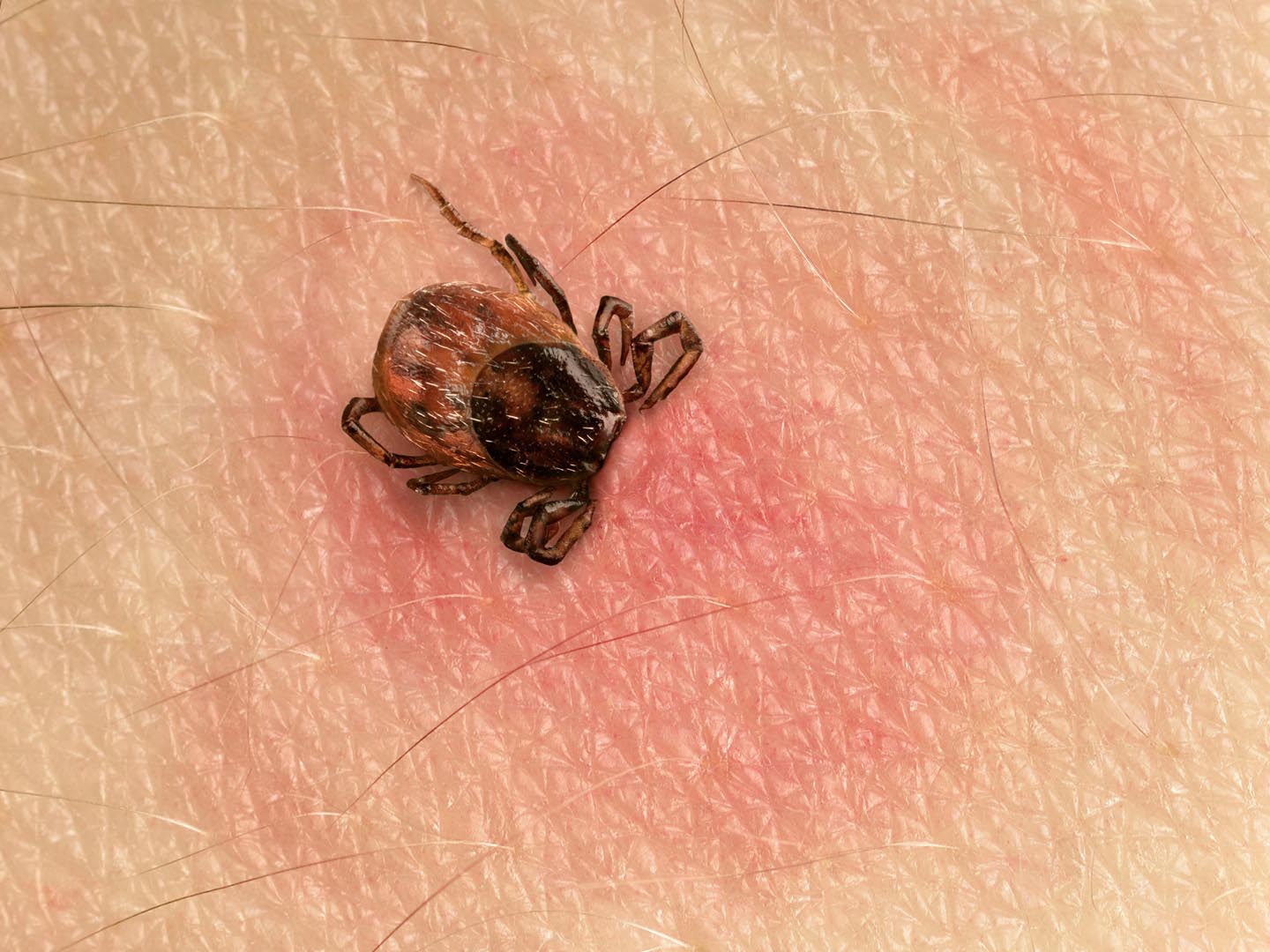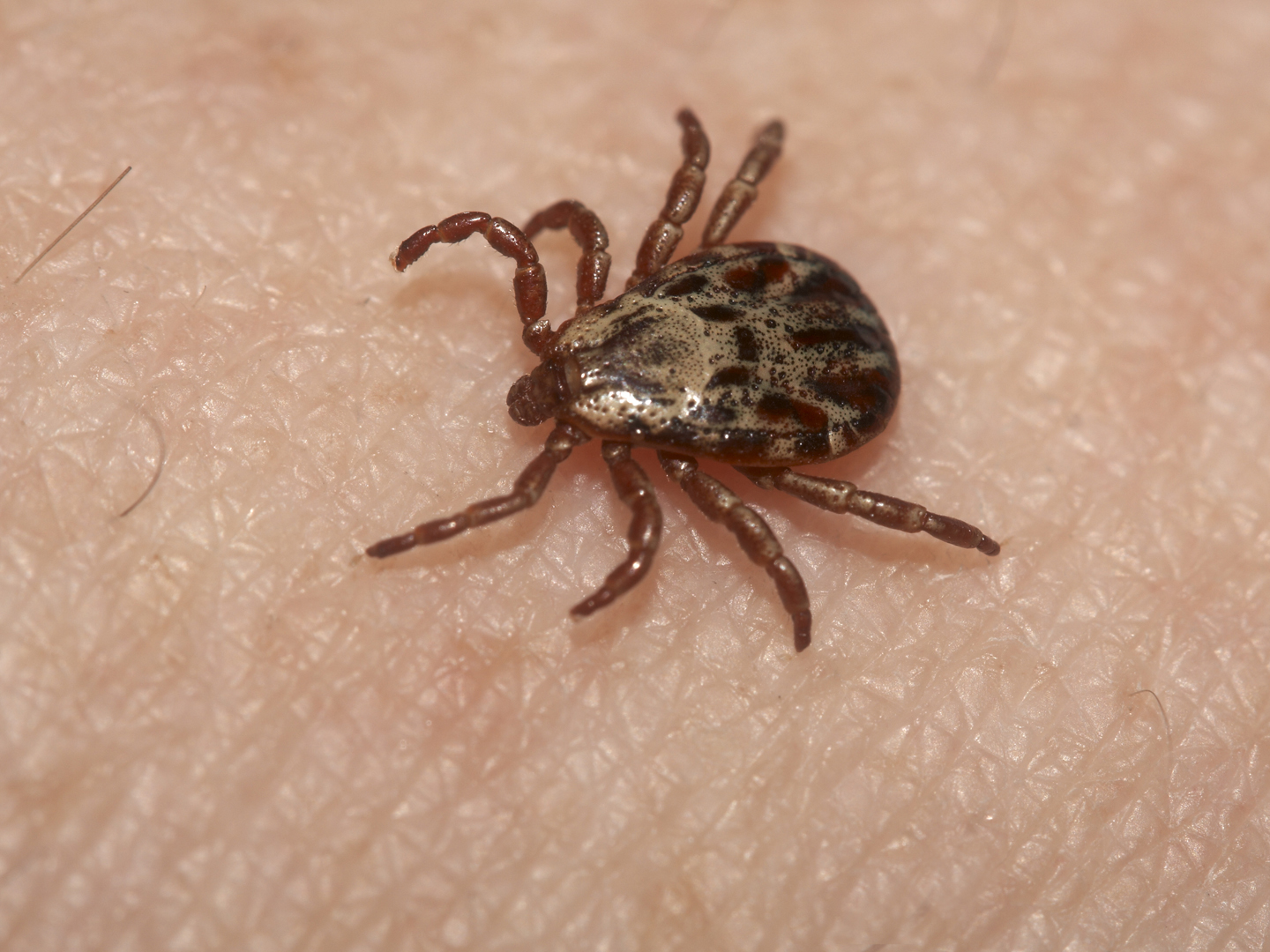Lyme Disease

What is Lyme disease?
Lyme disease is an infectious disease caused by a bacterium – usually Borrelia burgdorferi sensu lato – which is transmitted to people by deer ticks. The disease used to be confined to Long Island, New York, and Connecticut where it first was seen (it is named after the town of Old Lyme, Conn., where the original cases were diagnosed). Although incidence is still highest in the northeast, the disease has been reported throughout the United States.
What are the symptoms of Lyme disease?
The classic sign is a skin rash, often resembling a bulls-eye, but this isn’t always present. Other signs and symptoms include fever, headache, muscle pain, stiff neck, and acute swelling of the knees and other joints.
Left untreated, the infection can spread to all joints in the body, the heart, and the nervous system. After several months of B. Burgdorferi infection, slightly more than half of people who weren’t treated with antibiotics develop recurrent attacks of painful and swollen joints, most commonly in the knees. About 10 to 20 percent of untreated people go on to develop chronic arthritis.
Lyme disease can also affect the nervous system, causing a stiff neck, Bell’s palsy, and numbness in the limbs. Sometimes, untreated cases can lead to heart problems, hepatitis, and severe fatigue.
Alert doctors usually can recognize Lyme disease by the characteristic rash and other early symptoms including fever or joint pain. Diagnostic testing is typically necessary only when the disease wasn’t identified and treated in its early stages. The first of these tests is an enzyme immunoassay. If you test positive or the results aren’t certain, the next step is a standardized Western immunoblot assay. In 2005, the FDA and the Centers for Disease Control cautioned against certain tests for Lyme disease offered by some commercial laboratories. These include urine antigen tests, immunofluorescent staining methods to identify the causative bacteria, and polymerase chain reaction tests to spot bacterial DNA in blood and urine. Neither the accuracy nor medical usefulness of these tests has been adequately established.
What are the causes of Lyme disease?
Lyme disease is caused by the bacterium Borrelia burgdorferi sensu lato. In the northeastern and north-central United States this bug is transmitted to humans by the bite of the black-legged tick (or deer tick, Ixodes scapularis). In the Pacific coastal United States, the disease is spread by the western black-legged tick (Ixodes pacificus). Other major tick species found in the United States have not been shown to transmit Borrelia burgdorferi. Deer ticks are so tiny that they’re hard to see even when fully engorged with blood. Because they’re so small, you may not be aware that you’ve been bitten.
What is the conventional treatment?
If you recognize the symptoms early on, the infection can be eliminated by a few weeks’ treatment with antibiotics such as doxycycline, amoxicillin, or cefuroxime axetil. However, if not promptly diagnosed and correctly treated, those infected with Lyme disease can develop severe, chronic symptoms including arthritis and nerve damage. If you are experiencing these symptoms and live in an area in which Lyme disease is common, be sure to see a doctor who is well-versed in diagnosing and treating the disorder.
What therapies does Dr. Weil recommend for Lyme disease?
Posing physical barriers to tick bites is the best preventive strategy. The highest risk of encountering deer ticks occurs in wooded areas. When you’re in infested areas, wear light-colored clothing with long sleeves and be sure to tuck your pants into your socks to keep ticks from crawling up your legs. As soon as you get home, wash yourself and check your body for anything unusual. Have a partner check your back.
If you find a tick attached to your body or the body of a friend, do not pinch or swat it – use a tick-removal tool (available in drug stores or online) or tweezers to remove it. If you don’t have access to tweezers, use gloves, cloth or paper to cover your fingers. No matter what you use, here is how to proceed:
- Don’t grasp the tick by its bloated belly. Squeezing the belly could inject infectious agents into the bloodstream.
- Grasp the tick as close to its mouth (the part buried in your skin) as possible.
- Slowly pull the tick straight out – your aim is to pull the intact head and mouth out of your skin.
- Put the tick in a jar or plastic bag and save in the freezer. It may be needed for laboratory analysis later.
- Wash the bitten area well with a mild soap, such as dishwashing soap. Then use an antibiotic ointment on the wound.
If you suspect you have contracted Lyme disease, Dr. Weil recommends conventional diagnosis and treatment by a skilled, experienced practitioner. If symptoms become chronic, you might consider seeking consultation with a practitioner of traditional Chinese medicine. Qingcai Zhang, M.D., a Chinese-trained physician in New York City specializes in the treatment of Lyme and other chronic infectious diseases using antimicrobial and immune-supportive herbs (with and without antibiotics) and with acupuncture to regulate immunity and manage pain.









